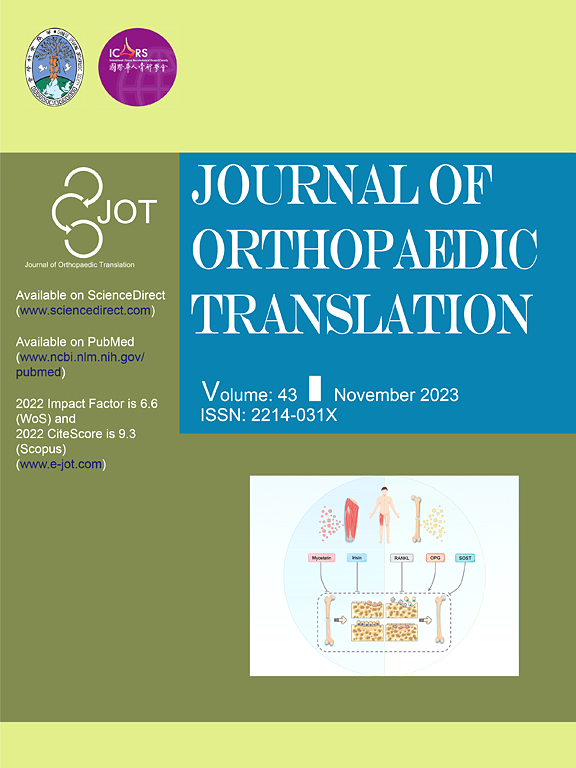动物试验的替代方案能否提供有关生物机制和药物发现的有用信息?
IF 5.9
1区 医学
Q1 ORTHOPEDICS
引用次数: 0
摘要
建立替代标准动物实验的策略,降低动物利用率,同时提高生物和疾病模型的可靠性。这篇综述强调了三个领域的进展:体外培养平台、疾病建模和计算机模拟。我们首先讨论了创新的体外方法,包括2D共培养系统、3D球体、类器官和器官芯片模型,这些方法有助于创造生理相关环境。然后,我们专注于疾病建模中的细胞选择和表征,特别关注骨折愈合和炎症。我们进一步回顾了计算机模拟的潜力,包括分子对接、机器学习(ML)方法和药代动力学-药效学(PK/PD)建模,以预测药物疗效、相互作用和生物学结果。这些替代策略为获得准确和一致的结果提供了可能,从而加强生物医学研究并减少对动物模型的依赖。本文的转化潜力:本文综述了体外类器官、微生理系统和计算模型作为动物试验的替代品。这些方法增强了我们对生物学机制的理解。它们还减少了对动物模型的需求。最终,它们有助于加速可以直接造福患者的药物发现。本文章由计算机程序翻译,如有差异,请以英文原文为准。

Can alternatives to animal testing yield useful information regarding biological mechanisms and drug discovery?
Establish alternative strategies to standard animal experiments decrease animal utilization and simultaneously enhance the reliability of biological and disease models. This review highlights advancements in three areas: in vitro culture platforms, disease modeling, and in silico simulations. We first discuss the innovative in vitro approaches, including 2D coculture systems, 3D spheroids, organoids, and organ-on-chip models, which facilitate the creation of physiologically relevant environments. Then, we focus on cell selection and characterization in disease modeling, with a particular focus on bone fracture healing and inflammation. We further review the potential of in silico simulations, including molecular docking, machine learning (ML) approaches, and pharmacokinetics-pharmacodynamics (PK/PD) modeling, to predict drug efficacy, interactions, and biological outcomes. These alternative strategies provide the potential for obtaining accurate and consistent results, thereby enhancing biomedical research and decreasing dependence on animal models. The Translational Potential of this Article: This review examines in vitro organoids, microphysiological systems, and computational models as alternatives to animal testing. These methods enhance our understanding of biological mechanisms. They also reduce the requirement for animal models. Ultimately, they help accelerate drug discovery that can directly benefit patients.
求助全文
通过发布文献求助,成功后即可免费获取论文全文。
去求助
来源期刊

Journal of Orthopaedic Translation
Medicine-Orthopedics and Sports Medicine
CiteScore
11.80
自引率
13.60%
发文量
91
审稿时长
29 days
期刊介绍:
The Journal of Orthopaedic Translation (JOT) is the official peer-reviewed, open access journal of the Chinese Speaking Orthopaedic Society (CSOS) and the International Chinese Musculoskeletal Research Society (ICMRS). It is published quarterly, in January, April, July and October, by Elsevier.
 求助内容:
求助内容: 应助结果提醒方式:
应助结果提醒方式:


